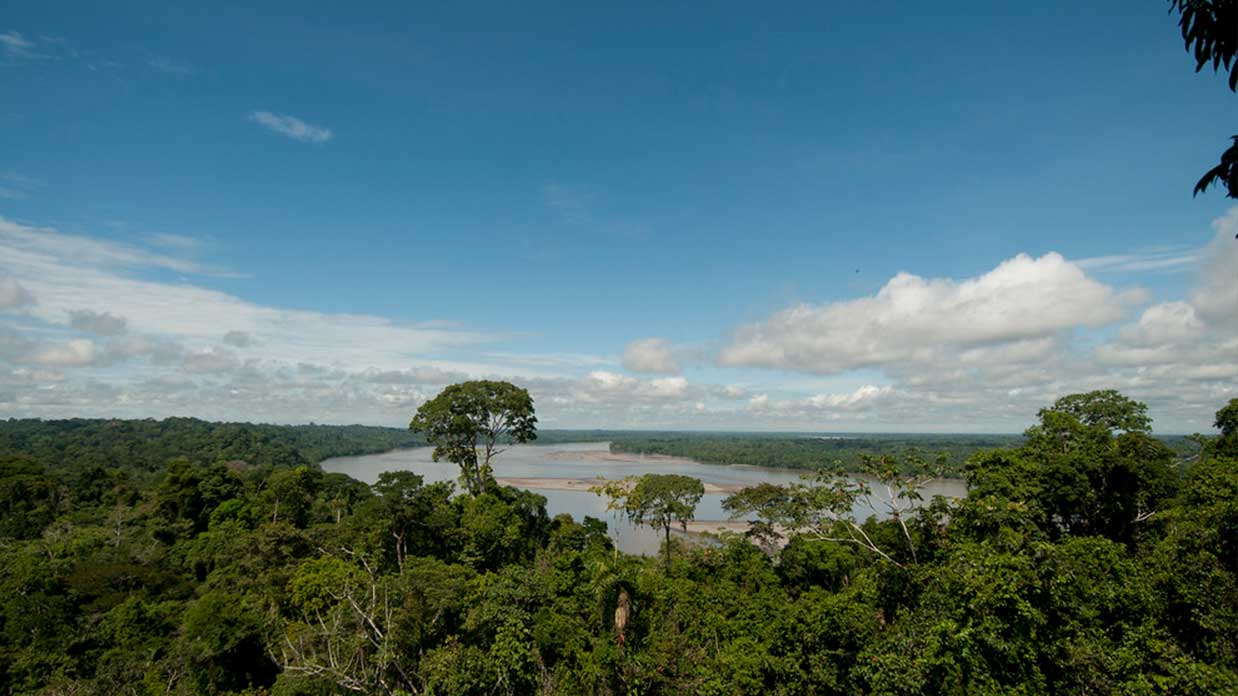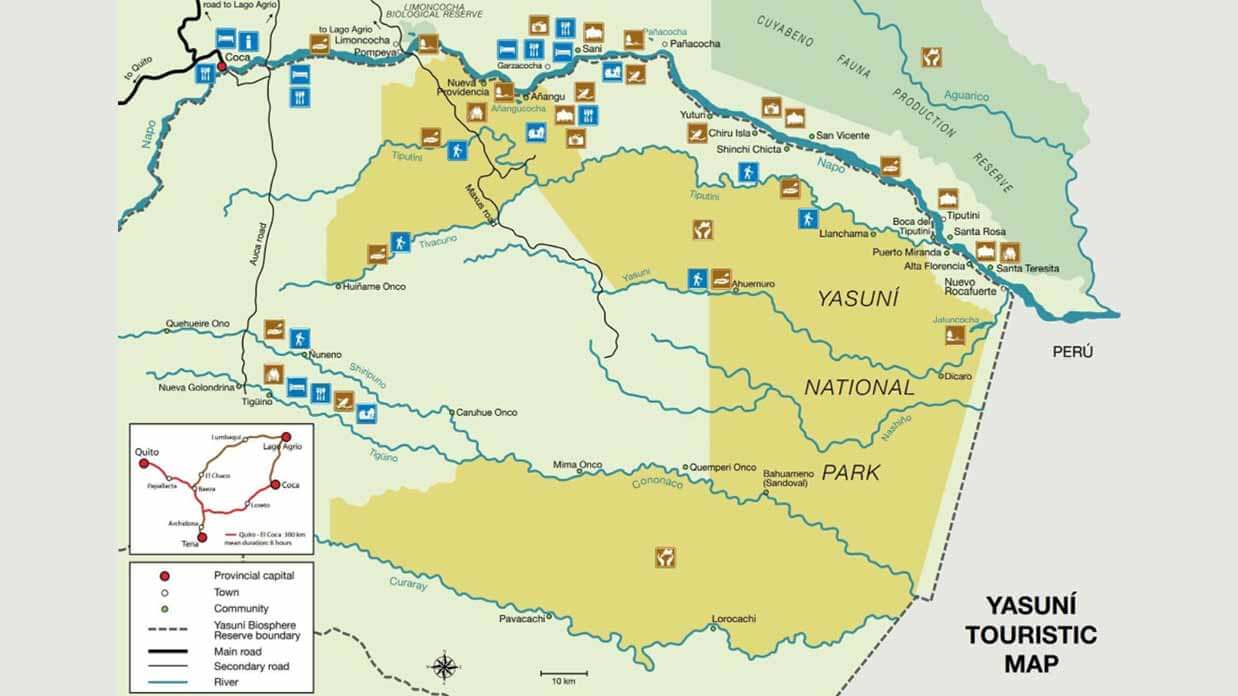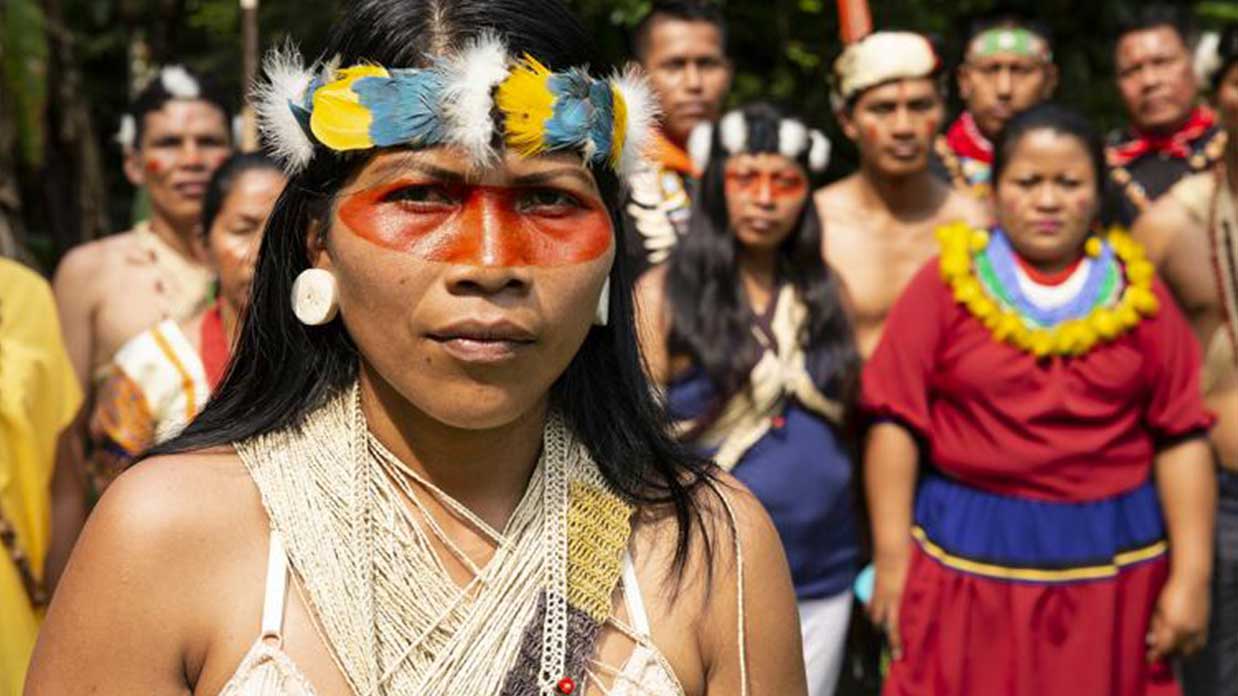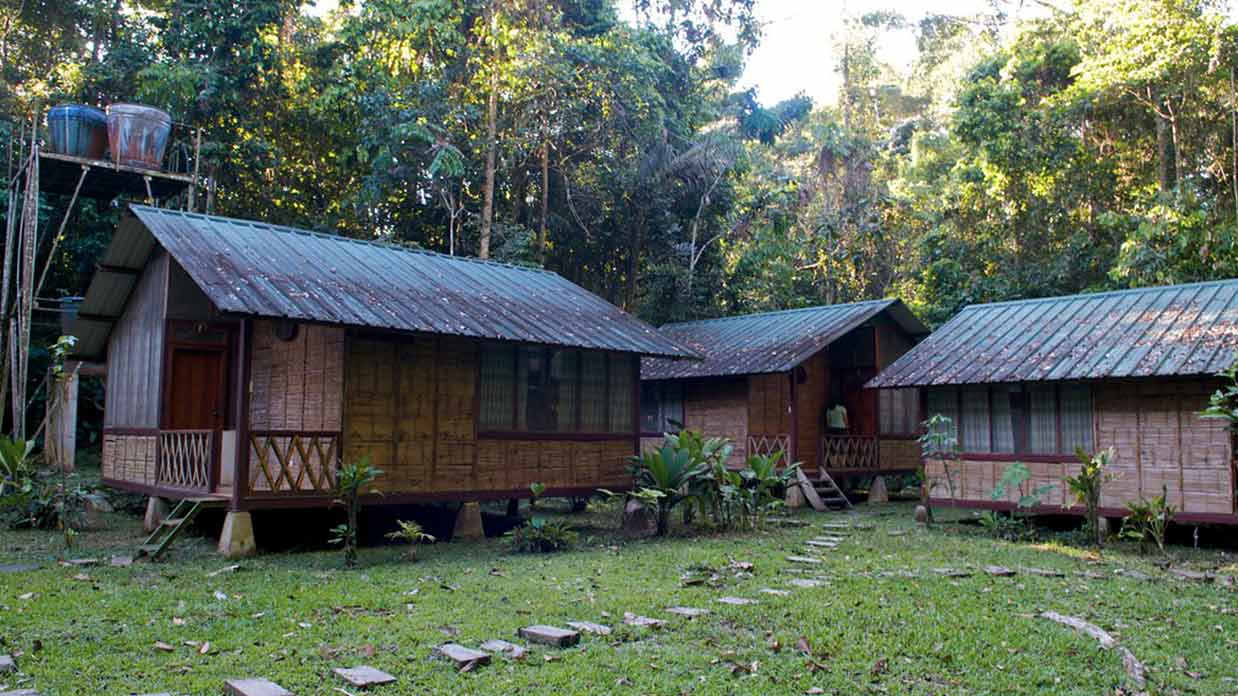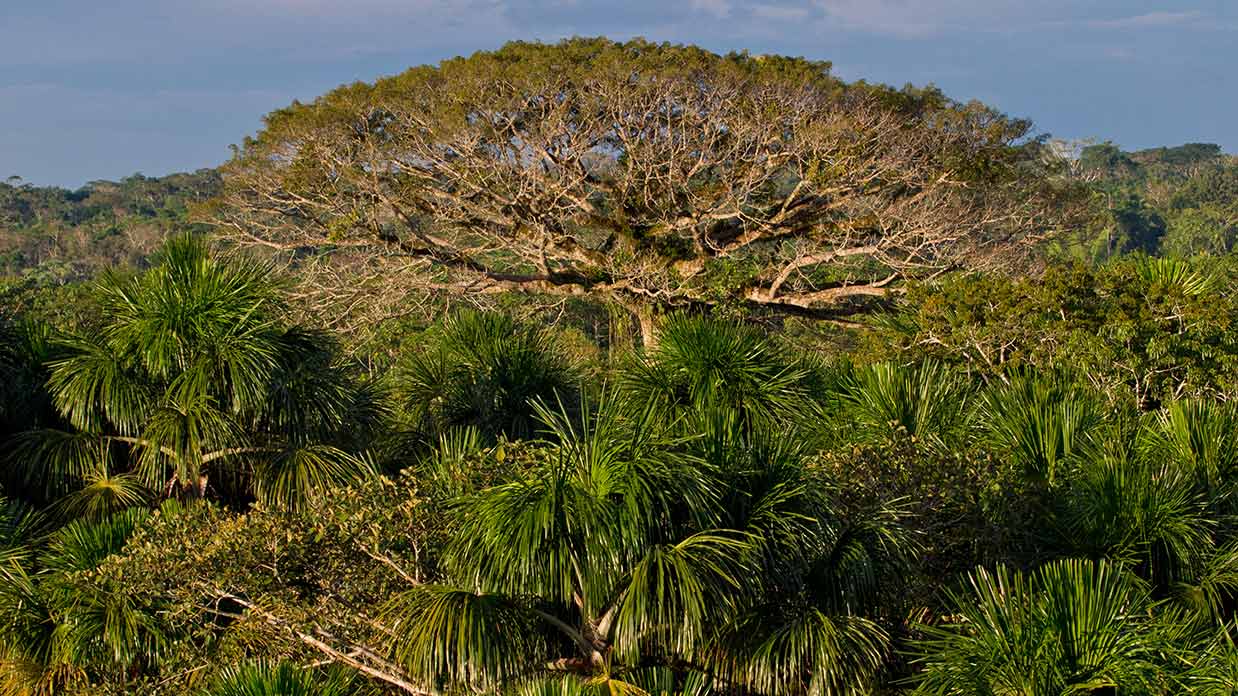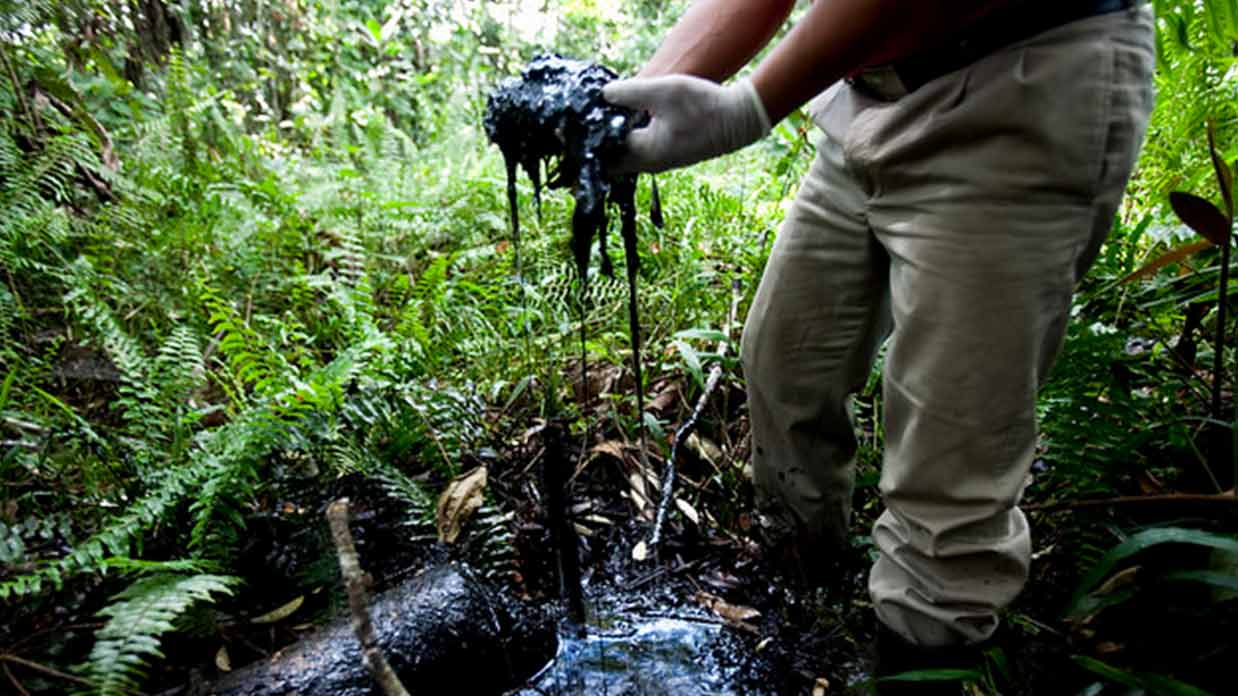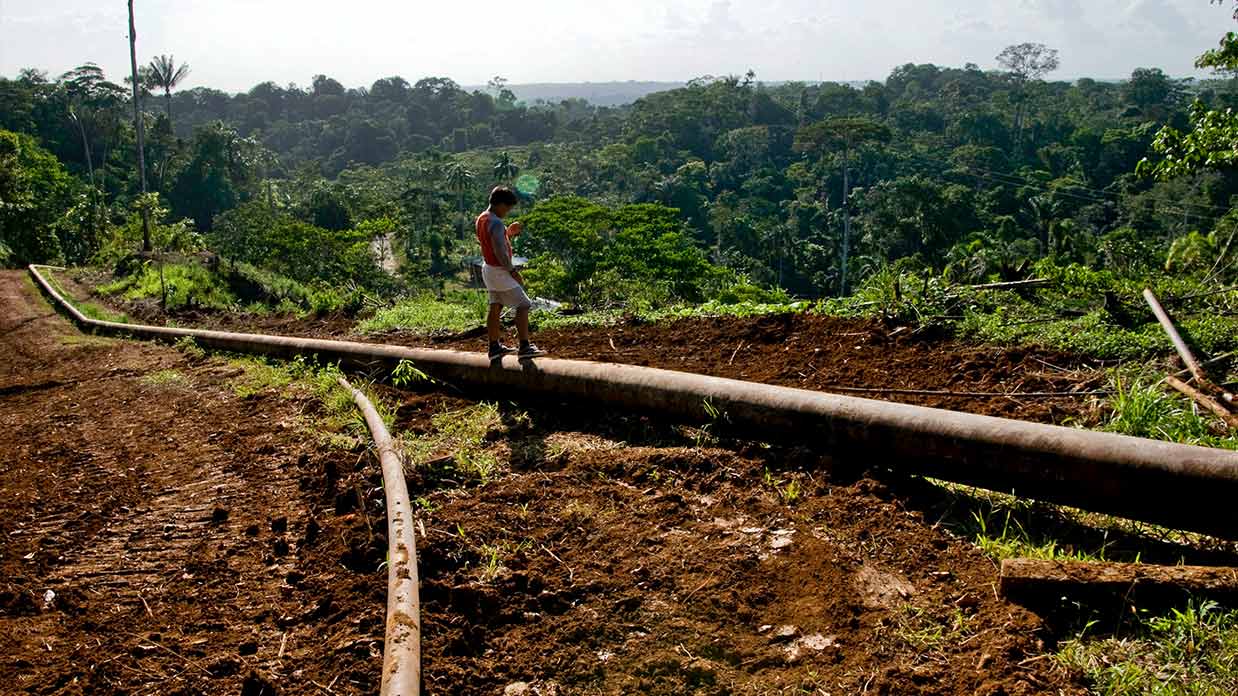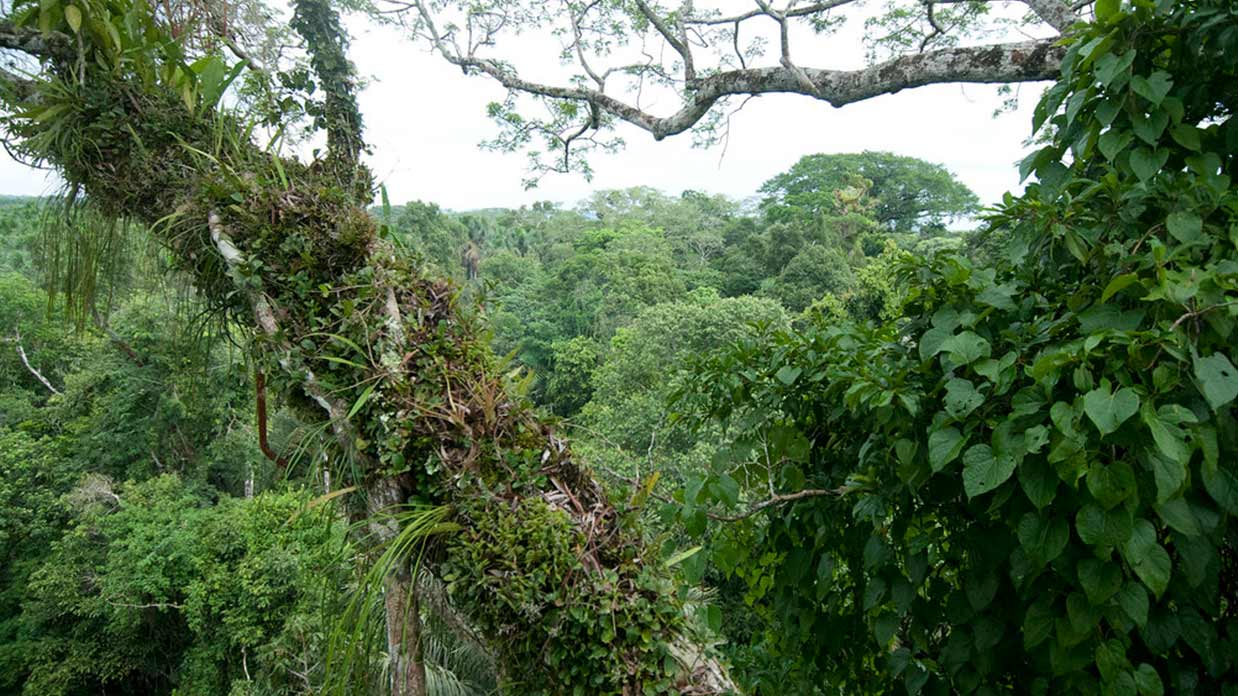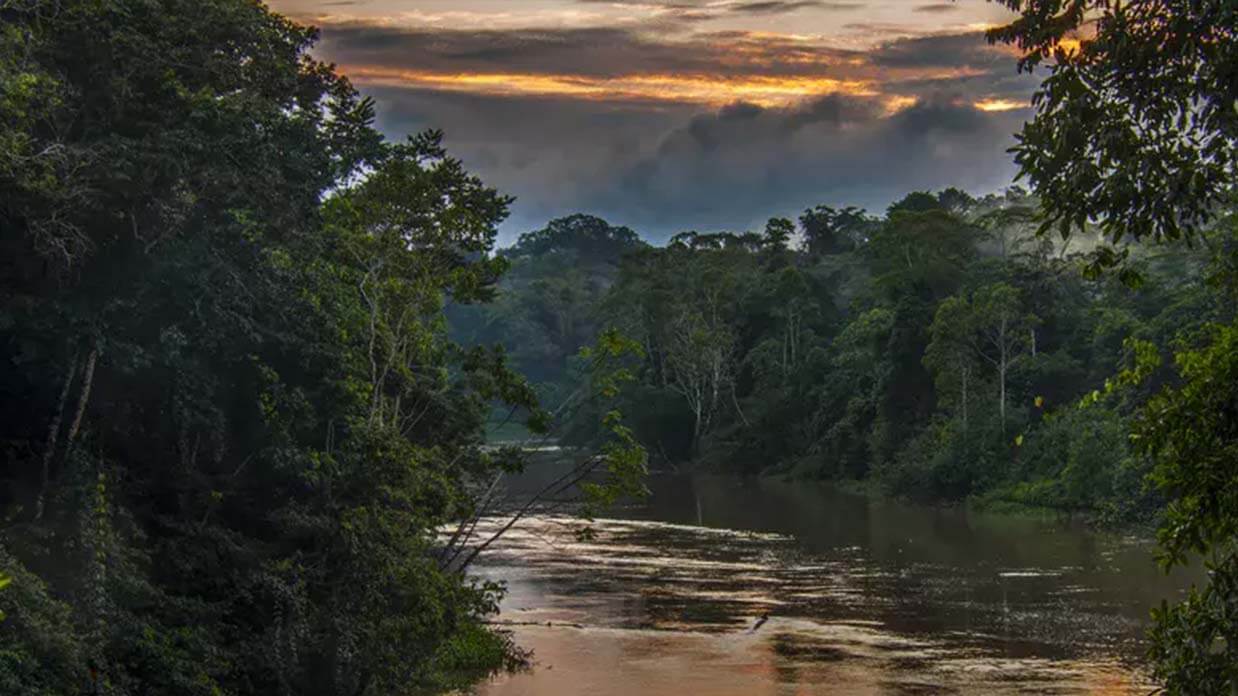Yasuni National Park
(Parque Nacional Yasuní)
Recognized by scientists as the most biologically diverse place on the planet, Yasuni National Park represents a huge tick to any nature lover’s bucket list.
Deep in Ecuador’s Amazon jungle, just one hectare of Yasuni forest boasts as many as 650 different tree species. To put that into perspective, we are talking about more tree species than those found in the entire continent of North America! It doesn’t stop there, the biodiversity statistics for mammal, bird, amphibian, plant, and micro-organism species are just as unbelievable. In fact, Yasuni National Park boasts a long list of biodiversity world records.
So, it comes as little surprise that Yasuní Ecuador is recognized as an important UNESCO biosphere reserve. NATGEO also lists the Yasuni Amazon as one of the top places in the world to visit in 2022. So, with the park officially reopened after the pandemic, there has never been a better time to visit!
Keep reading for the ultimate visitor guide to Ecuador’s Yasuni National Park. We include everything you’ll need to make your rainforest trip a success - from trip planning to packing list and travel practicalities.
SECURE YOUR AMAZON TRAVEL
Get a FREE personalised quote todayEverything You Need to Know About Yasuní Ecuador
Before we get into the nitty-gritty of how to visit, let’s kick-off with some fast facts about Yasuni national park.
Yasuni National Park Facts
Provinces: Orellana & Pastaza.
Created: 1979 (recognized by UNESCO in 1989).
Area: 9,823 sq km (mainland Ecuador’s largest protected area).
Altitude: from 190 to 400 meters.
Where is Yasuni National Park?
Yasuni is located in the Amazon rainforest region of Ecuador, to the east of the Andean mountain range which slices the country down the middle. Every drop of water that falls on this side of the Andes works its way into the Amazon River basin, eventually flowing out into the Atlantic Ocean.
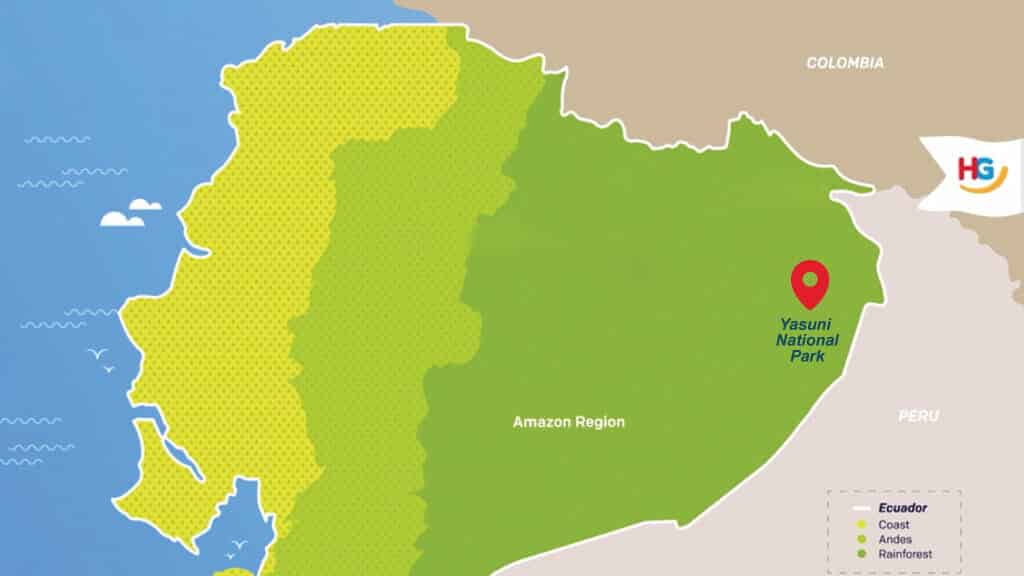
Yasuni National Park is nestled between the mighty Napo River (one of the main tributaries to the Amazon) to the north, and the Curaraylo River to the south. The park is a complex network of dense, tropical forests and various smaller rivers including the Tivacundo, Tiputini, Yasuni, Nashiño, Cononaco, and Tihuino.
Although just 250km away from Ecuador’s capital city, Quito, it does take quite a journey to reach Yasuni National Park. Of course, though, the journey is part of the adventure, with wonderful forest views to enjoy along the way.
What makes Yasuni Ecuador so special?
One word, biodiversity!
Yasuni has been referred to as “an ecological bull’s-eye”. The park is blessed with a very unique location - inside the Amazon basin, at the base of the Andes mountain range, and very close to the equator line. So, the convergence of these 3 distinct ecosystems forms an area uniquely rich in diversity of flora and fauna.
Yasuni National Park breaks all kinds of world records for local-scale biodiversity. It is one of the richest areas on the planet for the diversity of bird, tree, mammal, amphibian, and bat species. It’s also home to plenty of endemics that have only been found here. So, Yasuni is not only important to Ecuador, but more so to humankind as a whole.
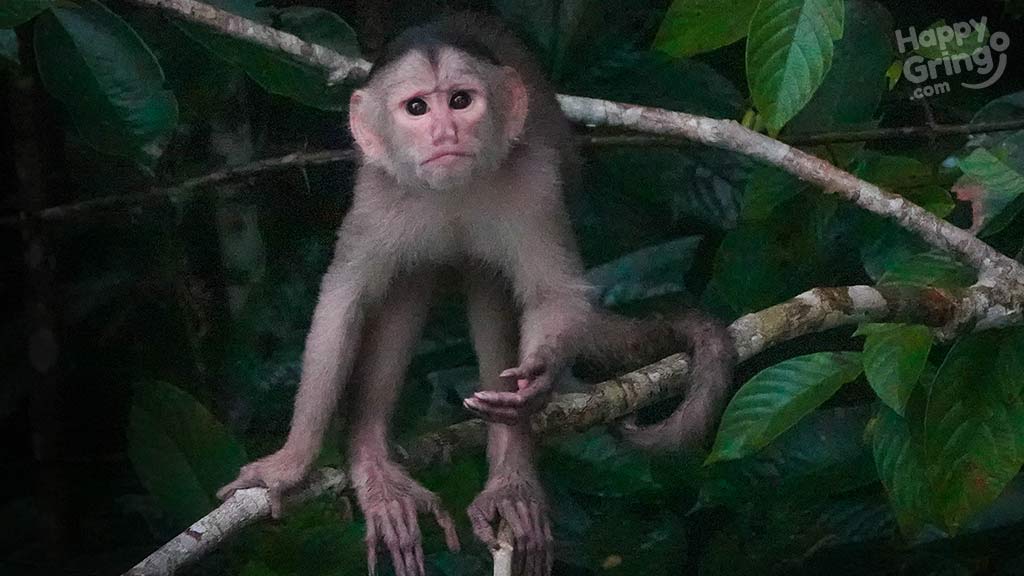
Yasuni is not only precious to flora and fauna but also protects part of the Waourani nationality territory. The Waourani are a hunter-gatherer people, who depend on primary forests for their very existence. Although many sub-tribes of the Waourani are now in touch with the modern world, the Tagaeri and Taromenane tribes remain in isolation, deep in the forest. Today, they represent one of only a few tribespeople on earth to resist contact with outsiders, preserving a unique way of forest life.
How to visit Yasuni National Park Ecuador?
Getting inside Yasuní National Park is not easy, but there’s no doubt that the reward far outweighs the effort.
How to get to Yasuni?
Access to Yasuni National Park is by river from the oil frontier town of Coca. It’s really not worth an overnight stay here, so plan to arrive early in the morning and connect directly with your canoe transport.
The journey to Coca from Quito can be made by plane (45 mins), or bus (8-10 hours. Take a night bus from Quito’s Quitumbe Terminal to arrive to Coca bright and early).
From Coca, a canoe ride to the Yasuni entrance takes 2-3 hours, depending on currents and water level.
That doesn’t sound so tough, right? But here’s the crunch … tourists need permission to enter Yasuni National Park, and of course a place to stay too. Options are mostly limited to a few luxury lodges with prices on the expensive side. So, the limiting factor is Yasuni's accommodation.
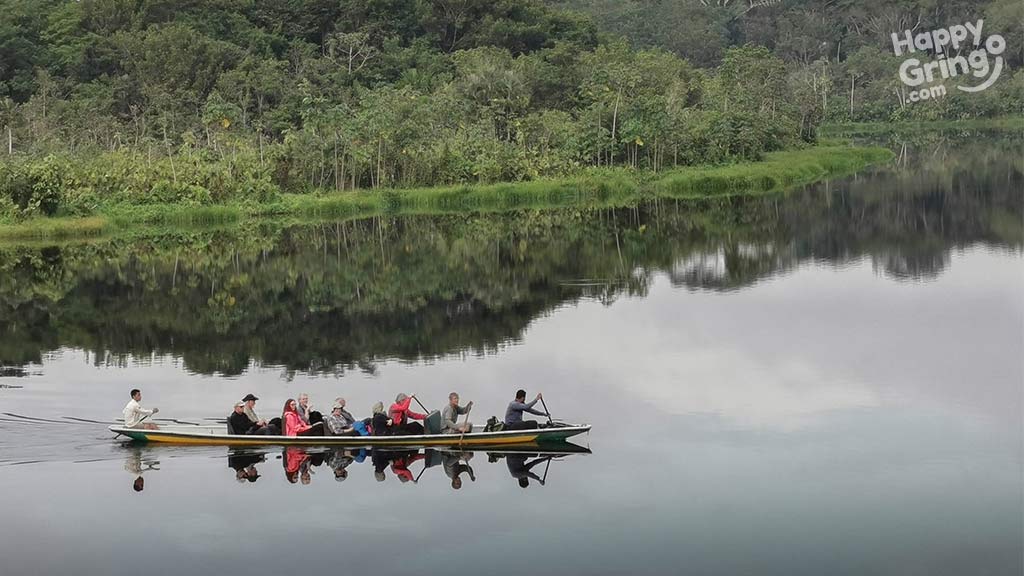
Where to stay in Yasuni National Park?
Yasuni is not an easy destination to visit under your own steam.
While in theory, it’s possible to make your own contacts in Coca for canoe transportation to the Añangu community, and from there pay entrance fees and try to hook up basic lodging, it is logistically rather difficult. Above all it’s tough to find reliable contacts to help you in Coca. For this reason, 99% of tourists pre-book an organized tour, with permissions, canoe transfers, guide, and accommodation already included in the package.
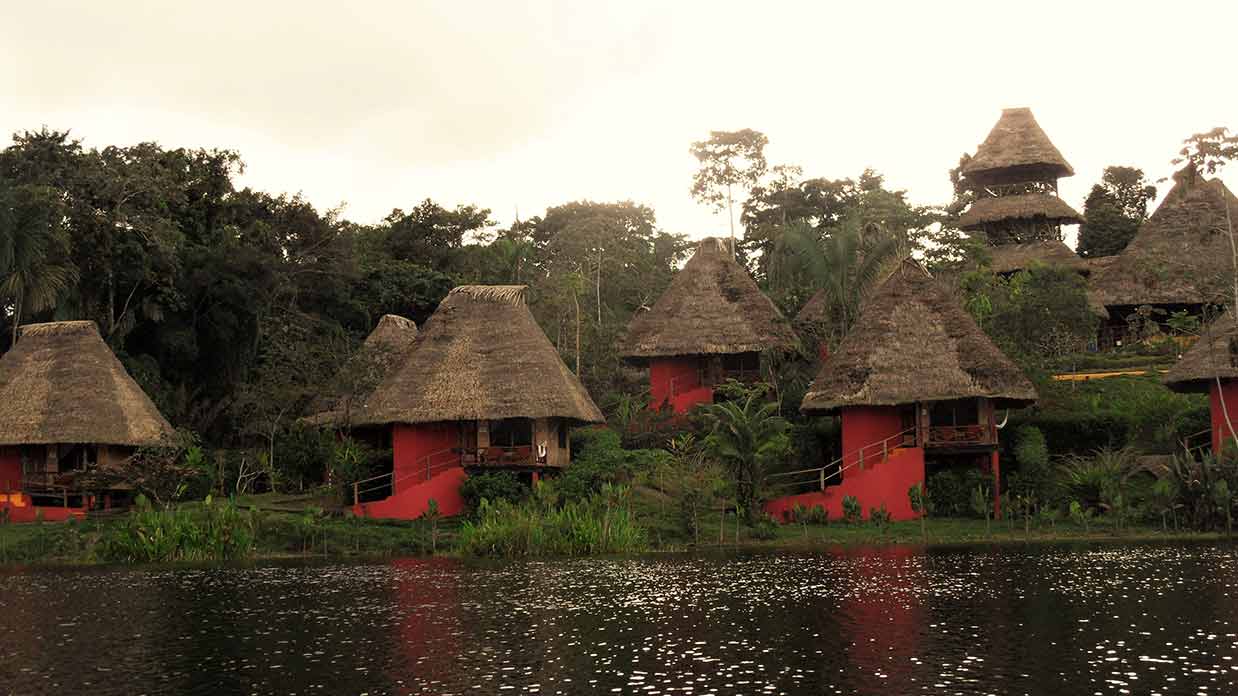
It’s also important to check if your tour will actually enter Yasuni National Park. Many tours and lodges skirt the edge of the national park on the Napo River without ever officially going in. Information can be misleading, so check the facts before booking.
To make life easier, we’ve prepared a list of our top 4 recommendations to get you inside Yasuni National Park, free of hassles and worries.
1. Napo Wildlife Center Lodge (NWC)
Without a doubt, the premium lodge located inside Yasuni is Napo Wildlife Center. Packages include comfortable accommodation (suites even have private jacuzzi), all meals & a fun mix of guided activities. Plus all of the travel organization and entry permits are organised for you. Tourists meet their guide in Coca and are well taken care of during the motorized canoe down the Napo River, and dugout canoe paddle into the park.
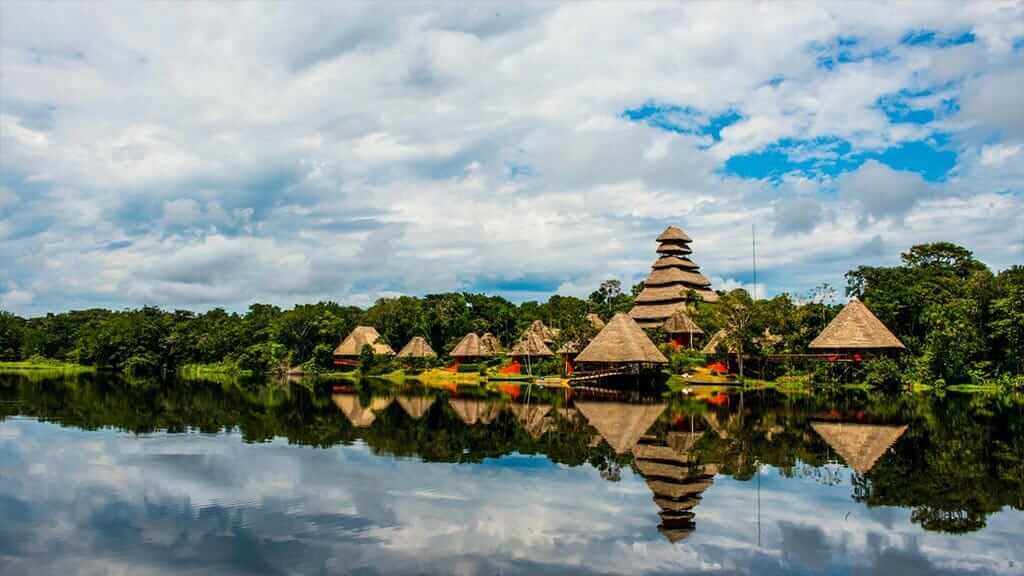
On arrival, it’s immediately clear that this is no ordinary lodge. The NWC location is simply breathtaking - set on a large black water lagoon, with stunning reflections of the thatched cabins and surrounding forest. This area is home to abundant wildlife, including giant otters, black caiman, various monkey and bird species, anacondas, and much more besides. Even better, you can often enjoy watching wildlife from up close around the lodge's social areas.
Activities include guided forest trekking, wildlife watching from a dugout canoe, visits to 2 different Yasuni parrot clay licks, and observation towers for unbeatable bird watching. Best of all though, all proceeds go straight back to the Añangu Kichwa community - a great example of sustainable tourism in action!
If your budget stretches this far, Napo Wildlife Center is without a doubt THE BEST WAY to visit Yasuni National Park.

2. Napo Cultural Center Lodge (NCC)
Also owned by the Añangu Kichwa community, Napo Cultural Center is a more affordable alternative to NWC. The lodge itself is located just inside the borders of Yasuni, and many of the activities will take you further into national park territory.
In contrast to NWC, Napo Cultural Center is run by the women of the community, and offers a balanced experience of both nature and culture. Visitors are able to share interesting aspects of daily life with the locals, who keep authentic age-old traditions alive. This includes joining a guayusa tea ceremony, and learning how to interpret dreams. Of course, there’s lots of great wildlife to see here too, as well as visits to the same Yasuni clay licks and observation tower as NWC.

Stays at both NWC and NCC help the Añangu people to improve their living standards, with access to healthcare, education & clean energy sources. At the same time, it supports Kichwa projects to protect their environment. So a stay at either lodge is a truly responsible tourism experience.
3. Mandari Panga Lodge
A slightly different lodge based within the boundaries of Yasuni is Mandari Panga.
Mandari Panga is an intimate camp with safari-style tents – a truly unique way to experience the Amazon rainforest. Common areas have been artfully constructed on local-styled platforms with thatched roofs, providing both comfort and a genuine connection with the environment.
A visit to Mandari Panga Lodge offers flexibility in tour type, including Nature & Culture (4 days), bird watching (6 days), and photo safari (6 days). Itineraries are also quite flexible during the trip – your guide will do everything possible to adapt the trip to your desires.
Small group capacity (maximum of 8) at Mandari Panga means you’ll receive personalized attention during each jungle activity.
What’s more, Mandari Panga is currently the cheapest way for tourists to stay inside Yasuni National Park. Your visit to Mandari Panga makes an essential contribution to improving the quality of life for the people in the local community to improve education and health care for the residents of this remote area.
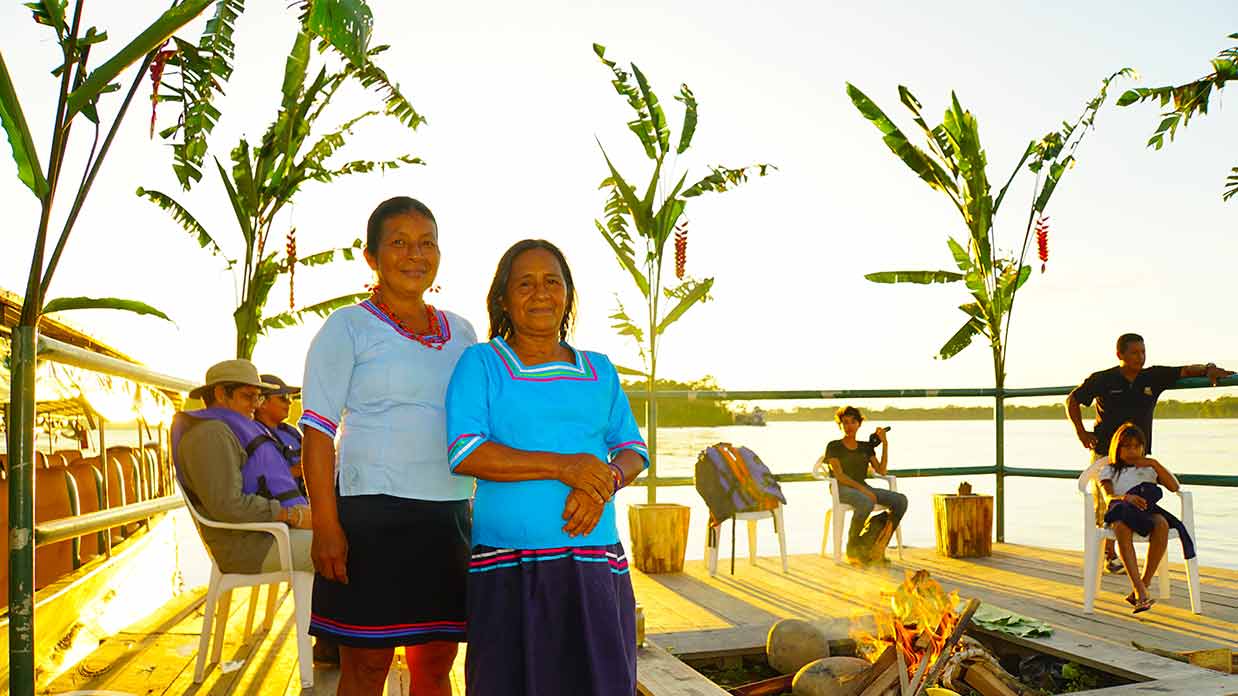
4. Waourani Community Camping Tours
For a more budget-friendly and Indiana Jones-style jungle adventure, let’s head deeper into Yasuni National Park to Waourani territory. Happy Gringo offers 2 different active camping trips with the Waourani people, designed for intrepid travelers who enjoy a more rustic, active, and off-the-beaten-path experience. Don’t expect your creature comforts here, but it is an authentic experience.
Waourani Kayak Adventure is a 5-day excursion deep into Yasuní. Setting up base camp in a Waourani village, daily kayak or Standup paddle board (SUP) activities take you within reach of all the best wildlife. Visitors also share unforgettable cultural experiences, such as learning how the men use blow guns and Spears to hunt, as well as harvesting fruits and yucca with the women.
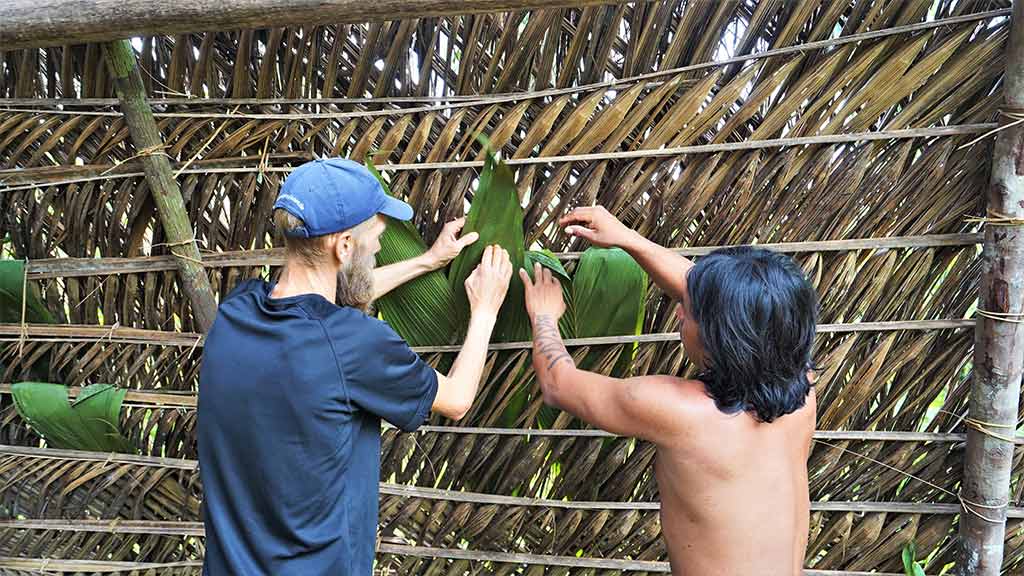
Jaguar Tracks is a similar experience with shaman Kempery and his Waourani tribespeople. The key difference is that you’ll explore more by foot, instead of river paddling. See if you can find jaguar track prints in the mud when on a forest trek with your guide.
If you’re after a Yasuni National Park trip that doesn’t burn a hole in your pocket, then either of these tours fits the bill. Regular group dates open up for the popular Kayak Adventure, which helps to shave another $300 off of the private tour cost.

Last but not least we have the renowned Tiputini Biodiversity Station. While not accessible to regular tourists, the center does accept student groups, researchers, and film crews. It was established in 1995 by Universidad San Francisco de Quito in collaboration with Boston University and continues to perform groundbreaking research projects inside Yasuni Ecuador.
Tiputini’s location is second to none, in the depths of Yasuni. The educational experience that they offer is also exceptional. As well as the regular rainforest treks and canopy tower, students can also get involved in collecting data from camera traps, monitoring the local primate community, observation of visitors to clay licks, conservation of river turtles, nature photography workshops, or even tree climbing courses!
For university professors planning a trip for their student group, Tiputini is a life-changing experience!
Best Things to do in Yasuni National Park
For those who love the great outdoors, Yasuni National Park is a giant playground with something for just about everyone to enjoy.
1. Yasuni Wildlife Watching
For most people, probably the number one reason to visit the Amazon rainforest is wildlife watching. With a good pair of binoculars or a zoom camera, Yasuni certainly doesn’t disappoint - the diversity of fauna is truly outstanding!
So, which different birds & animals call Yasuni National Park home? Everything from large mammals such as jaguar and puma, to tiny creatures like the pocket monkey and poison dart frog. Of course, Yasuni is no zoo, so a degree of good fortune is always required, but most tourists are able to tick off an excellent selection of species within 2 or 3 days.
While big cat sightings are naturally rare, noisy Amazon monkeys are much easier to find. In total, 12 different monkey species live within the protected boundaries of Yasuní, including spider, wooly, howler, squirrel, and cute capuchin monkeys. Other mammal species you might cross paths with are the giant otter, tapir, wild boar, deer, capybara, ant eaters, and armadillo.
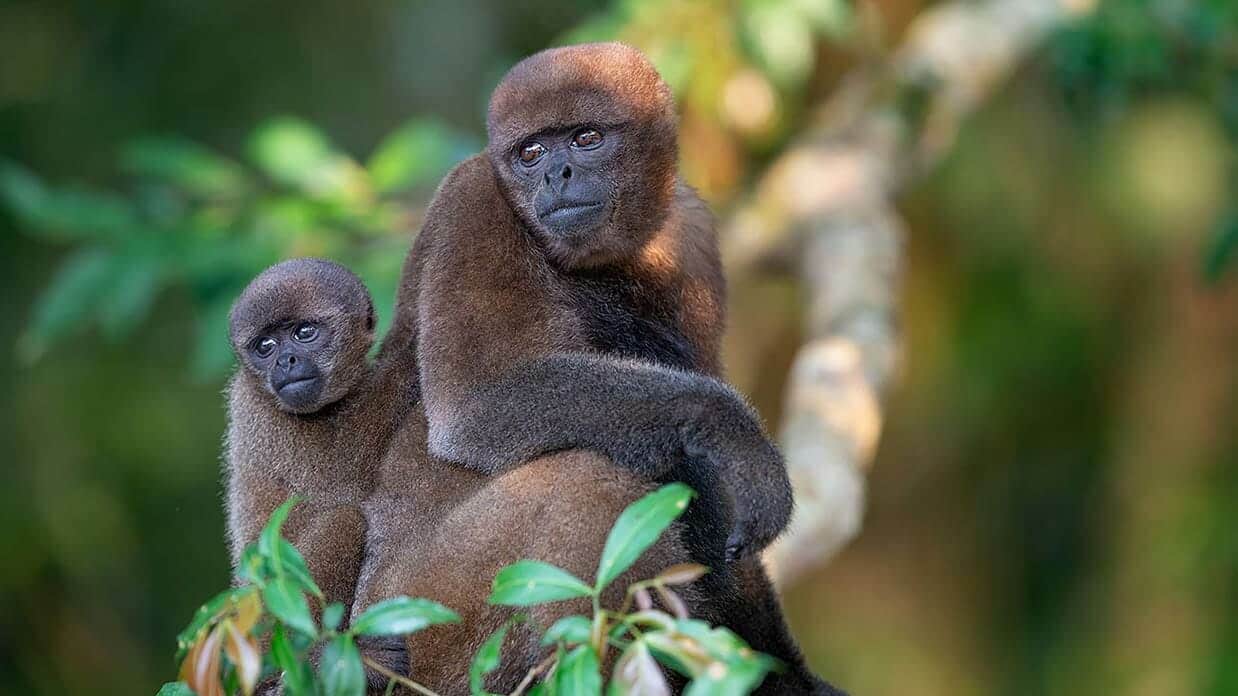
Black water lagoons or streams are the perfect hiding place for black caiman alligators and anacondas – pound for pound the largest snake on the planet. Other reptiles in Yasuni waters include turtles, smaller snakes (62 species currently documented), plus a world-record diversity of frog species per hectare.
On top of this, Yasuni Ecuador also boasts 382 known fish species, from shoals of sharp-toothed piranha to huge paiche that grow up to 7 feet long – real-life river monsters!
Incredibly, Yasuni National Park also holds records for insect diversity, with over 100,000 different insect species per hectare. That’s equivalent to all of the insect species found across North America. OK, so creepy crawlies might not be your thing, but seriously, who doesn’t love little leaf-cutter ants?
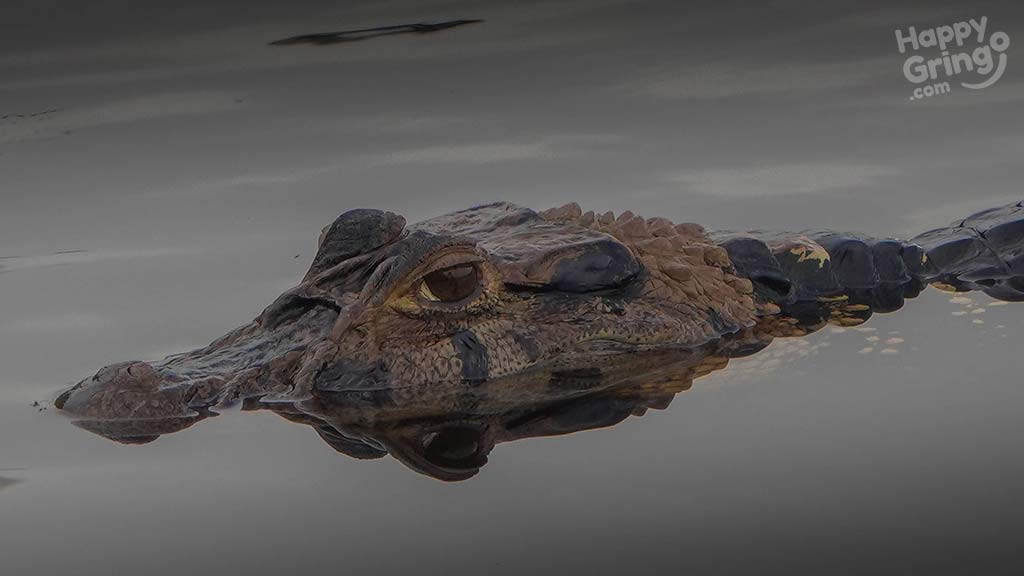
2. Yasuní Bird watching
Yasuni National Park also has plenty of action for birders. Home to at least 596 bird species, birding enthusiasts are like kids in a candy store. Non-birders will also enjoy this activity, as many species colorful, exotic, and unusual.
Search through your guide’s spotting scope for toucans, woodpeckers, and eagles from the high canopy observation towers. Meanwhile, at ground level, hummingbirds flit between flowers, tinamou scurry through the foliage, and prehistoric-looking hoatzin birds squawk for attention. Kingfishers, flycatchers, and waders are common sightings along river and lake shores. Yasuni clay licks are frequented daily by macaws and parrots, complementing their regular diet with important minerals. Potoo and owl species camouflage so well that without a guide you would not even know they were there.
Most lodges even offer specialist birding guides at extra cost for serious birding enthusiasts. It’s worth the extra expense, as birding guides know exactly where to search for each species, and their trained eagle-eyes can spot birds where mere mortals see nothing.
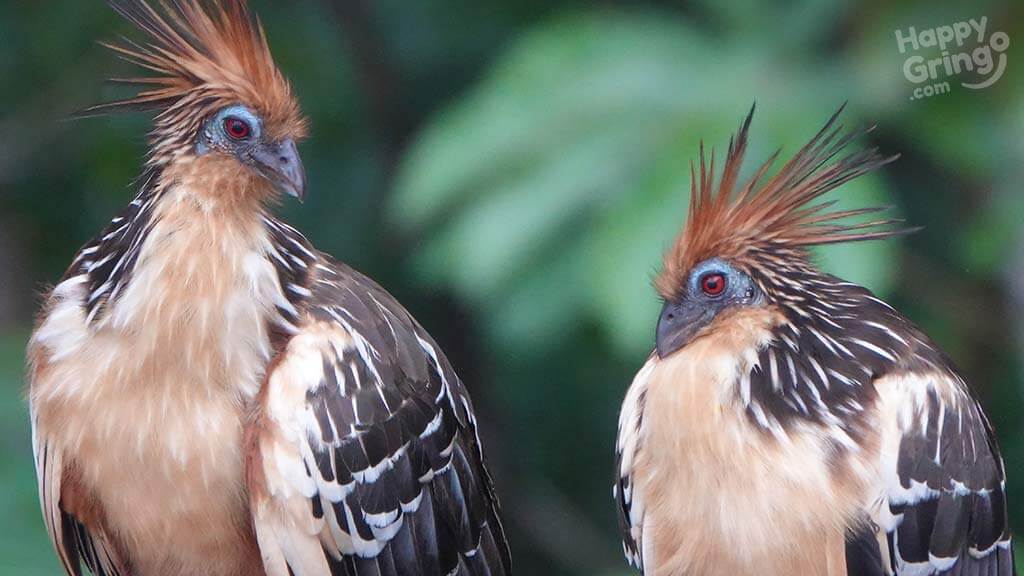
3. Immersion in Nature - Plant & Trees
Nature lovers can also appreciate the incredible plant life found in Yasuní National Park. From towering ceibo trees with giant buttress roots, to tiny delicate orchid flowers - the lush Amazon is teeming with life everywhere. What’s more, the area inside Yasuni is largely a primary forest – in pristine condition, completely untouched by humans.
This is one of just nine places in the world with more than 4,000 vascular plant species per 10,000 km2. In case you were wondering, yes Yasuni holds plant biodiversity world records too, four for documented tree and liana species, and three more for the diversity of woody plants.
Leaving boasts to one side for a moment, what does all this mean in reality for visitors?
For me, my personal visits to Yasuni National Park have been about learning and education. Understanding the incredible connections that different rainforest plants share. Learning how local cultures live in harmony with the forest, to provide food and shelter. Discovering medicinal plants and bush Tucker, the secret knowledge of forest dwellers.
The Yasuni rainforest is also about connection. A portal into our own past, to times before we decided to chop forests down. A deep immersion into the values of mother nature, and a glimpse of the natural harmony and tranquility we have learned to live without in the city. A first-hand experience to understand the damage humans cause to nature, and the stirring of a strong desire to live better.
The rainforest is also a lesson in perspective. From the unfathomable macro expanses of green from the canopy tower to the micro beauty of each tiny plant and insect. The Yasuni ecosystem is more immense than one can imagine, yet at the same time, the forest’s secrets are there waiting to be discovered.
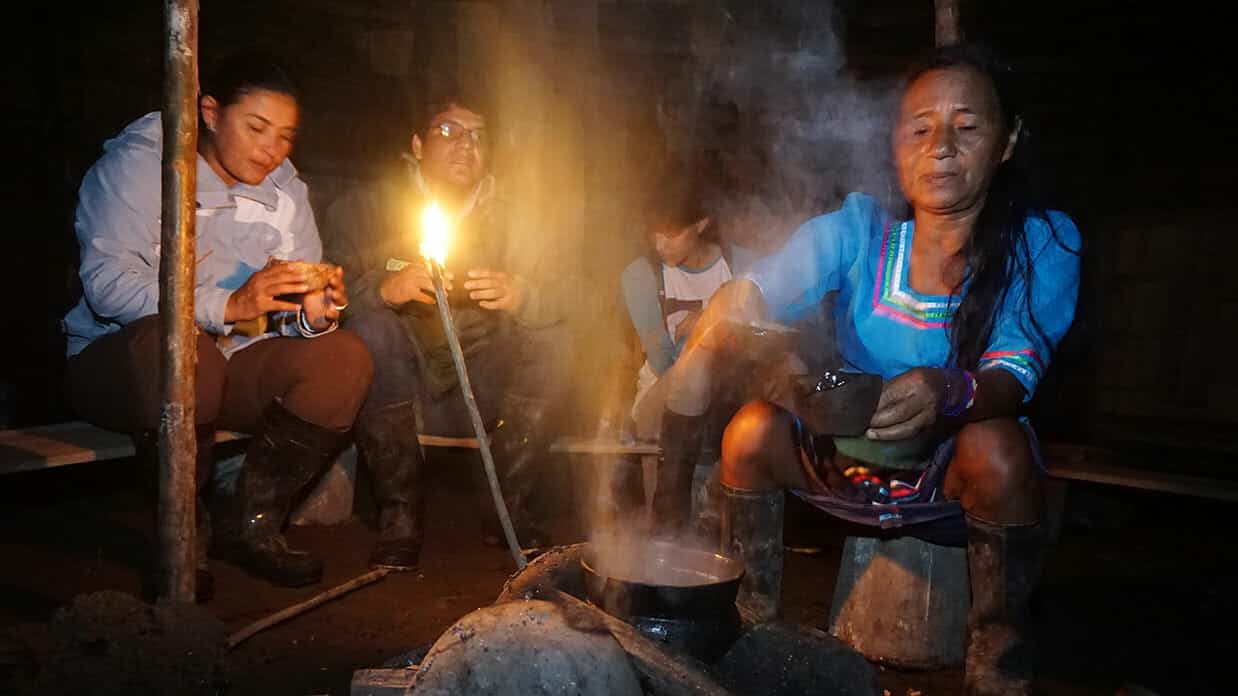
GET FREE ADVICE
From an Amazon destination expert today4. Rainforest Hiking
The best way to get to know Yasuni’s forest is to pull on a pair of rubber boots, and hit the trails.
Relying on the keen eyesight of your native guide, the forest begins to reveal her secrets. Discover which plants are edible, as food or medicine, and which contain deadly poisons. Learn how to use palms to weave a basket on the go, or to thatch hut roofs. Find the Sangre de Drago tree (dragon’s blood) – whose sap is famed for sealing open cuts and healing wounds.

Basic tracking skills can also be developed, to identify which jungle creatures crossed the jungle trail before you. There’s also a whole world of fascinating ants and bugs waiting to be discovered at ground level.
For adventurous souls, accompany your guide on a night walk. The nocturnal forest is a whole different experience and adventure. Hidden frogs croak into life, caiman and snakes become formidable predators, and creepy crawlies come out to play. The forest orchestra has come to life, a throbbing cacophony of croaks, screeches, and cries. Turn off flashlights for just a minute, and focus all attention on the sounds. Suddenly the forest has found new magic, yet at the same time has become a tiny bit scary. Not to worry, cocktails and beer await safely back at the lodge … if you make it back, that is.
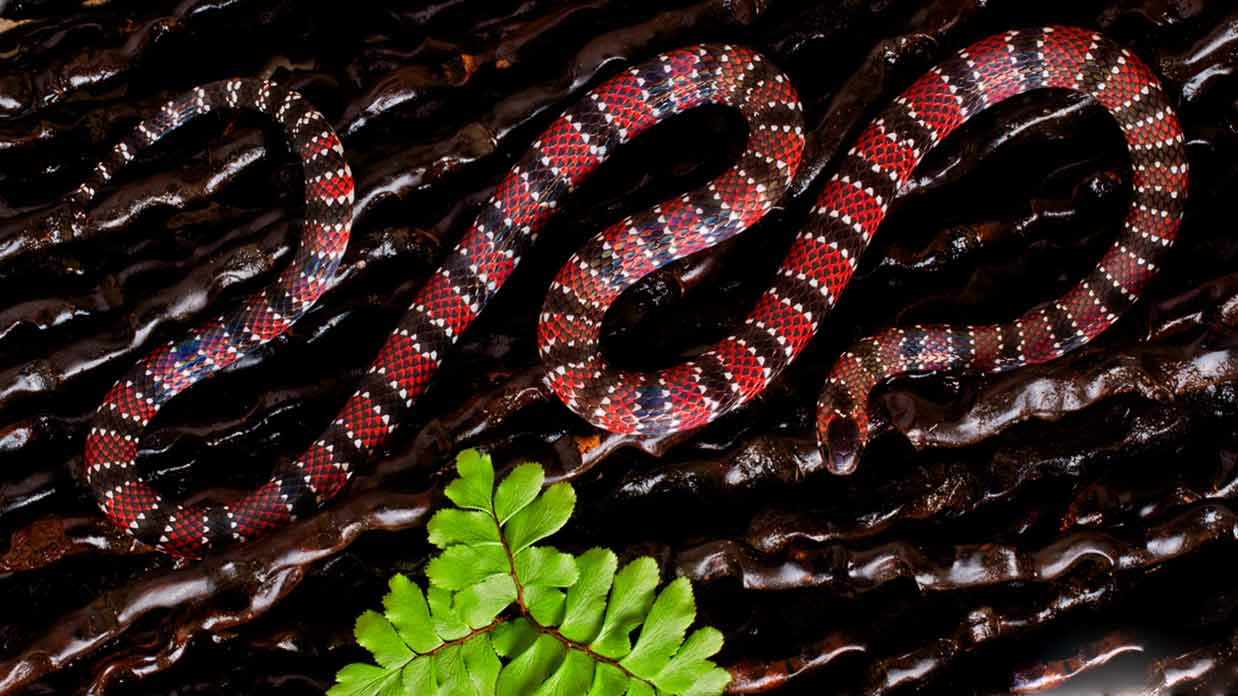
5. Exploration by Canoe
Paddling in dug-out canoes is often the best opportunity to spot wildlife in the forest. River travel gets you closer to the action, without scaring animals away.
Rivers and streams are the roads of the Amazon. Many birds and animals prefer to hang out by river banks or lake shores, where feeding requires less effort. Unlike exploration on foot, the canoe glides gently and silently into their world. Camera and binoculars at the ready, the dugout canoe is an Amazon safari like no other.
On rainforest lodge tours the guide will paddle and steer for you. For more of an adventure, specialist kayak and stand-up paddle board (SUP) tours are also available.
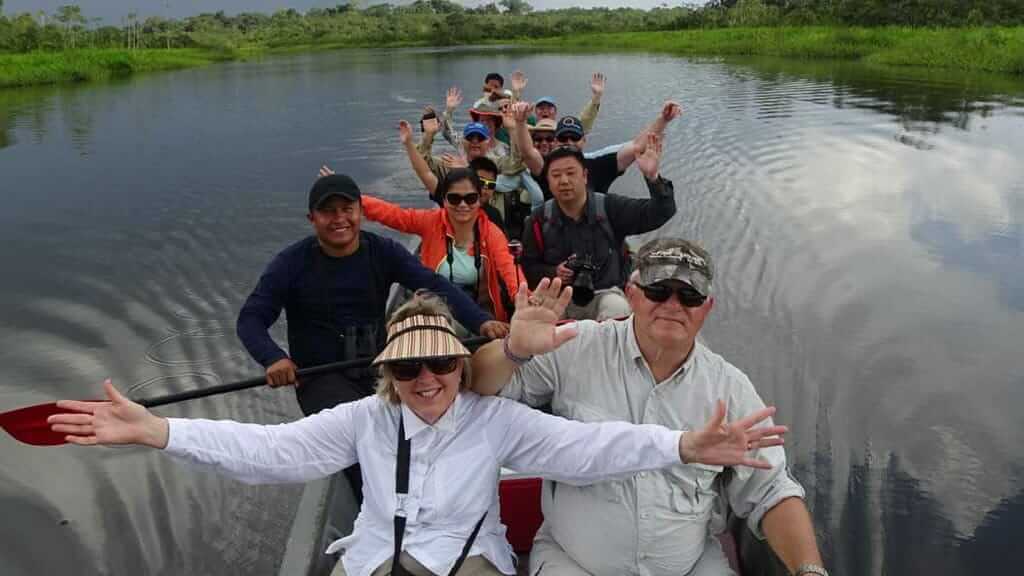
6. Meet Yasuni Jungle Tribes
The Yasuni National Park rainforest is home to 2 different indigenous cultures: the Waourani and Kichwa people. No visit would be complete without experiencing local life in a forest community.
The Waourani (or Huaroani) were traditionally forest hunter-gatherers. Their way of life changed dramatically when missionaries and oil companies reached them over the past century. Today, just two of the Waourani sub-tribes, the fierce Tagaeri and Taromenane, choose to live in isolation from the modern world. The remaining Waourani have given up their nomadic ways to live in small communities within Yasuni. The Waourani territories are to the west side of the national park.

The Kichwa people, on the other hand, inhabit the north of Yasuni. The Añangu community on the banks of the Napo River is well organized with a health center and school. They operate both the Napo Wildlife and Cultural Center lodges of Yasuni, as well as managing two parrot clay licks and several observation towers.
Both these tribal peoples are open to sharing their customs and culture with visitors. This usually involves traditional music, dance, ceremony, and food. The Waourani also teach jungle hunting techniques. It’s certainly hard not to be impressed by their ways of life. The rainforest is a tough environment for human life, requiring much adaptation and ingenuity.
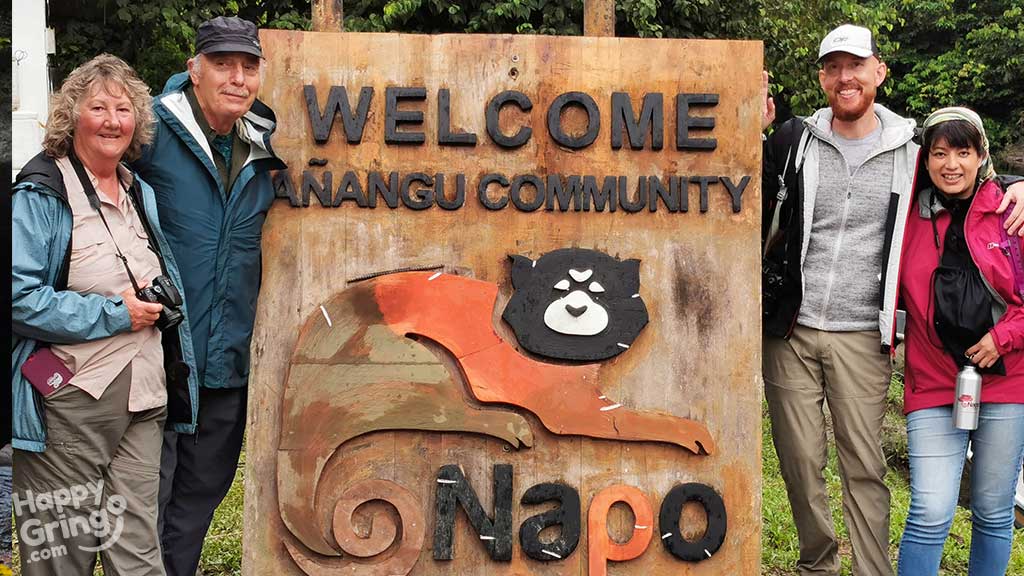
7. Head Up into the Canopy
The views from Yasuní observation towers provide an excellent contrast to the ground-level forest. Canopy stretching out before you in waves of lush green, this is home to many bird species and also makes sloth and monkey spotting easier.
Some towers are built around towering old Ceibo trees. Climbing from the huge buttress roots, up into the dense tree canopy is a pretty amazing experience in itself. The indigenous builders have been remarkably careful to integrate the tower infrastructure, without causing any damage to the old Ceibo – the grandmother of the forest.
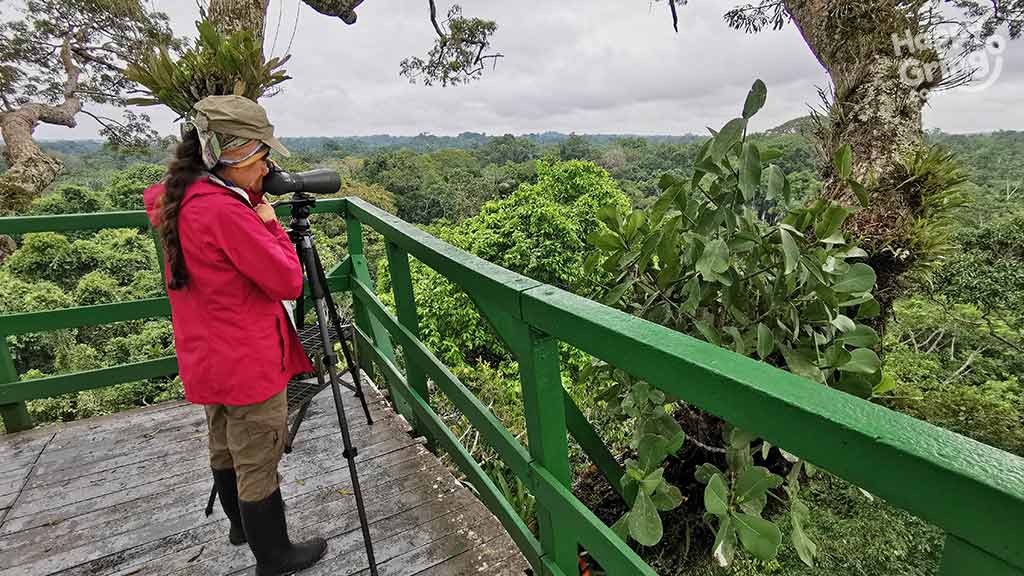
8. Visit a Yasuni Parrot Clay Lick
Another excellent spot for bird watching is at a parrot clay lick. Every day, noisy parrots, parakeets, and macaws flock to lick the mineral-rich soil, causing quite a spectacle. Special hides allow photographers and visitors to watch from close up without scaring the birds away. Occasionally large mammals like tapir, deer, or even big cats also visit clay licks.
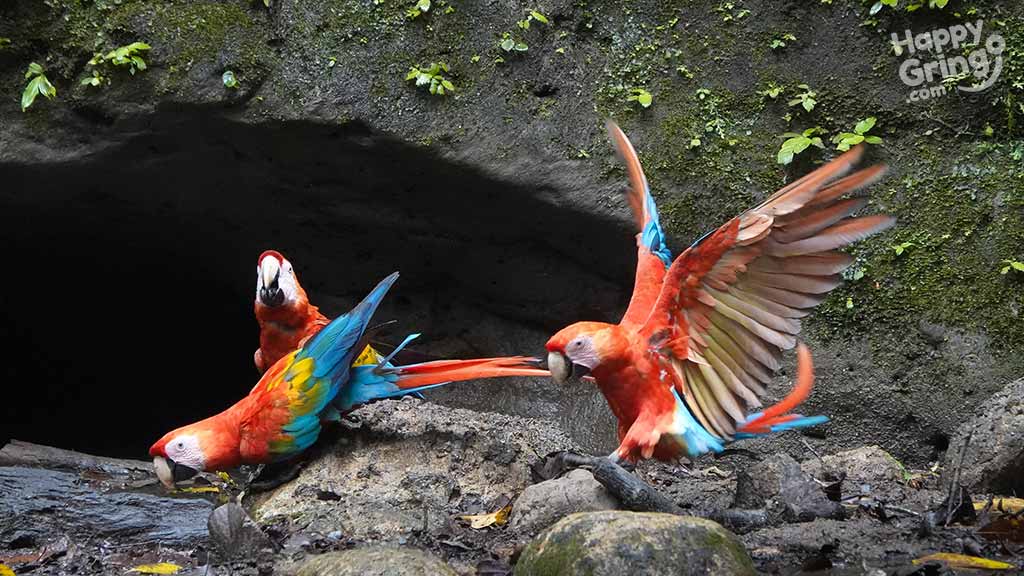
What are the biggest threats to Yasuni National Park?
Today, an impressive 99.73% of Yasuni is still thankfully untouched by humans. Yet, as with other regions of the Amazon basin, the forest is under increasing threat.
The principal risk to the primary Yasuni forest is oil drilling and the infrastructure that comes with it. An estimated 1.7 billion barrels of crude lies in the Ishpingo-Tiputini-Tambococha (ITT) oil fields, directly under the primary rainforest. For a developing country like Ecuador, this makes a mighty tempting target to boost Ecuador's national Budget and economy.
Back in 2008, Ecuador was the very first country to recognize the rights of nature within its constitution. Yet, even that was not enough to prevent the very same government from later granting oil drilling permissions within Yasuni National Park.
Fast forward to August 2023, and Ecuador held an important referendum regarding the future of oil exploitation within the borders of Yasuni National Park. Happily, almost 60% of Ecuadorians voted to STOP oil operations within Yasuní. Congratulations to the Yasunidos environmental group for many years of hard campaigning to make this successful vote happen. It should go a long way to ensure the future protection of this biodiverse national park.
Other threats to Yasuní include deforestation, illegal logging, and unsustainable hunting.
While Yasuni remains very well protected to this day, it is very much a case of battles that have been won, but the war is just beginning.
How about this for a more positive story on the future of Ecuador's Amazon? Incredibly, a member of the Waourani tribe made the TIME 100 list in 2020. Nemonte Nenquimo, a female Waourani leader and campaigner is a true inspiration in a world where all too often materialism rules. Just click on her name to read her remarkable story & learn more about Nemonte's wonderful work.
Typical Weather in Yasuni National Park
The weather in Ecuador’s Amazon is defined by 3 distinct seasons – wet, dry, and in-between. There is no “best” time to visit per se, as each season has pros and cons to consider.
The rainy season runs from March to July. In some ways, the name is misleading as it does actually not rain all day every day, but heavy showers are to be expected. The advantages of travel during the wet season are higher river levels and more comfortable temperatures around 24 degrees celsius (75 Fahrenheit).
The dry season lasts from December to March. Of course, this is the rainforest, so still expect some precipitation, but certainly less than the rainy season. The plus is that rain is less likely to interrupt activities, however, visitors will have lower river levels to deal with, which can make canoe navigation more complicated. Temperatures and humidity are also higher (38 degrees celsius / 100 Fahrenheit).
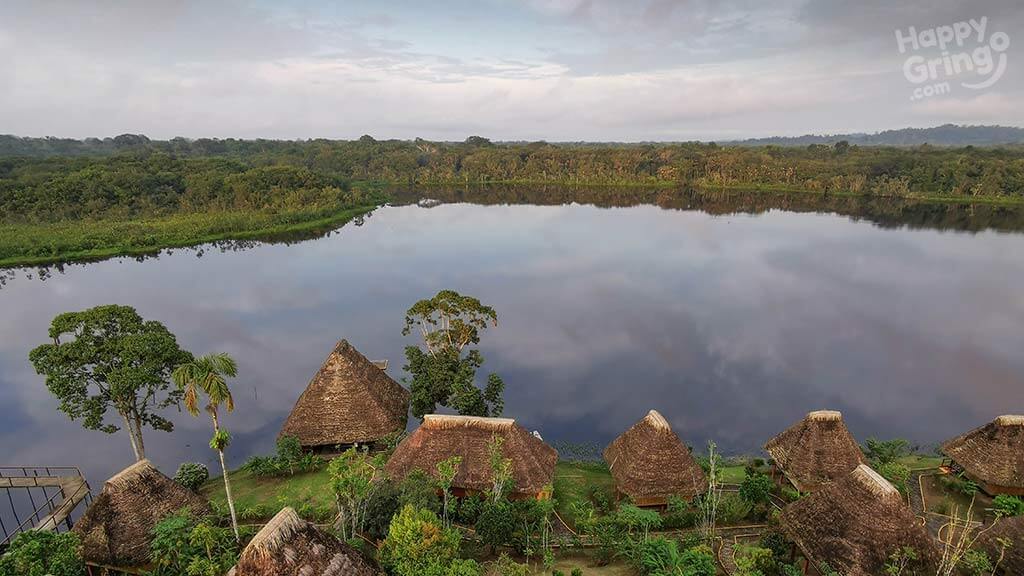
The in-between shoulder season is defined by the remaining months of the year, roughly July to December. These months bring more unpredictable weather patterns, so expect a mix of rain and sun, with variable temperatures.
Practicalities for visiting Yasuní National Park
• Access to Yasuni National Park is restricted to authorized tourism operators, using certified naturalist tour guides.
• Vaccinations required to enter Yasuni are yellow fever and tetanus, although in practice these are rarely checked. At the time of writing full Covid vaccination is not required.
• Malaria medication is recommended, although it’s best to consult with your doctor before you travel. Bug spray is a must to prevent mosquito bites in the first place.
• Packing List – be sure to go well prepared as there are no shops in the jungle (except for basic boutiques in some lodges). Check out our handy Amazon packing list blog for more information.
• Most Yasuni lodges will provide rubber boots and rain ponchos for jungle activities. Life jackets are also available on canoe trips.
• A camera with a good zoom lens and/or binoculars is highly recommended to catch the best wildlife views. A dry bag is also a good idea to keep electronics, passports, and money dry.
• Tipping of guides and Yasuni lodge staff is expected. Check out our detailed Ecuador tipping blog for guidelines.
• Bar tabs can be used at most Yasuni lodges, payable by cash or card on the final night of your trip.
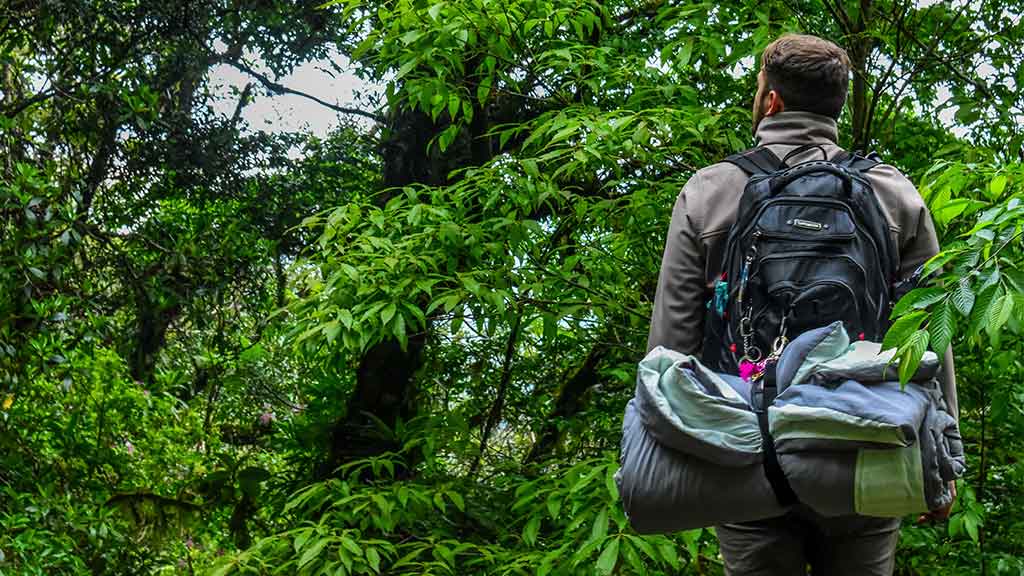
Book with The #1 Trusted
Ecuador Travel Agency
Contact us for a free tour quote – Happy Gringo specialize in custom-made trips right across Ecuador, Galapagos, and the Amazon. We’ll be happy to include an unforgettable trip to Yasuni National Park in a vacation itinerary for you.
In summary, Yasuni National Park is one of the very top visitor highlights in Ecuador. This protected area holds numerous world records for biodiversity and is recognized by both UNESCO and NATGEO. Nature lovers will be blown away by the flora and fauna, as well as the cultural and tribal activities. If you wish to visit the Amazon rainforest, then make it a once-in-a-lifetime trip and splurge a little extra to stay within Yasuni boundaries! You certainly won’t regret it!



